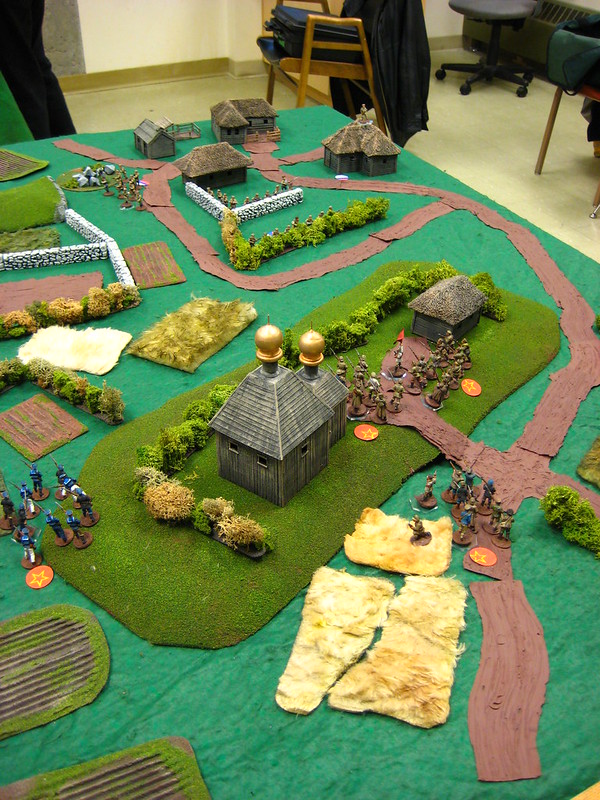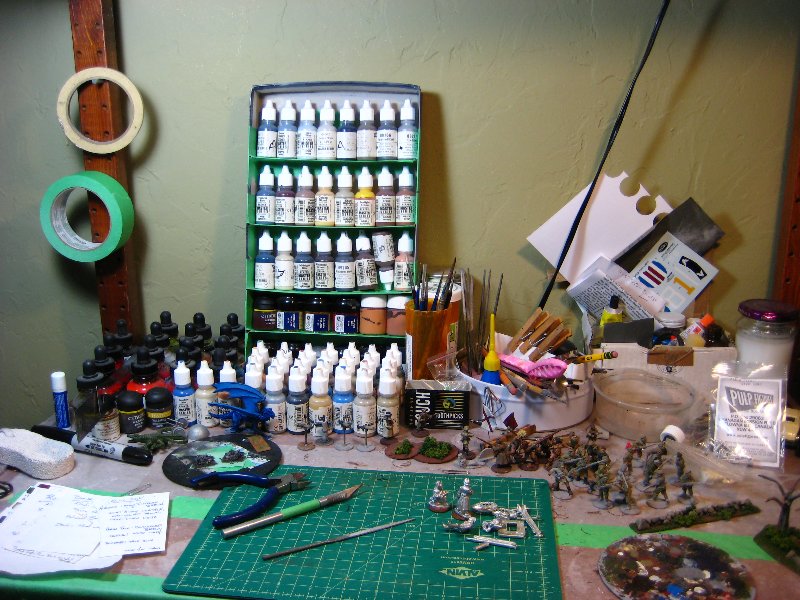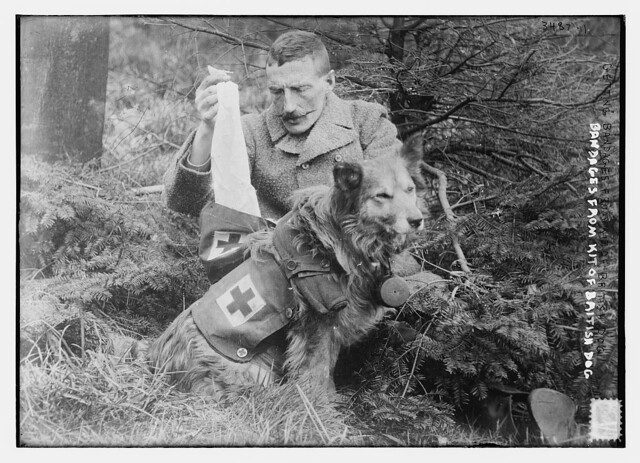No, not rules for Frodo sneaking up on Smaug with that useful ring of his (although possibly related), but the trick of having good rules that you know moderately well become invisible in play, so that you concentrate on gameplay and tactics rather than the minutiae of the rules.
This was prompted by something Sean, our newbie Through the Mud & the Blood player, said right at the end of last Sunday’s M&B-powered Russian Civil War game. I’m paraphrasing slightly, but he said something to the effect of, “I liked that the rules got out of the way and let you just play the game, rather than having to stop every two minutes to look up some special rule or try to interpret something out of a Codex that seems to contradict what’s in the main rulebook.”
This struck me as a useful expansion on something I’ve mentioned here before and long held as a personal tenant, that you should value flow of the game and fun value over nitpicking details of the rules you’re using. The additional thought is that good rules will assist with this process rather than hinder it. This might seem obvious, but it bears pointing out.
I posted this to the TooFatLardies mailing list, and Richard Clarke, the author of the Mud & Blood rules, replied, “Music to my ears. I keep banging on about how rules should be as “invisible” as possible, so it’s good to hear stories like that one.”
Any set of rules, even the most complex RPG rules, can become relatively invisible if enough people in the group know them well enough, but elegantly written rules let you pull the trick off faster. Off the top of my head, two other rules systems that become nearly invisible in play and are also personal favourites are the old fantasy battle game Hordes of the Things (a variant of the famous DBA) and the fantasy skirmish system Songs of Blades & Heroes from Ganesha Games. It’s also one of the attractions of playing an unfamiliar set of rules at a convention, where the details of the rules are the referee’s problem and you can concentrate on getting your troops to do things and rolling the dice when the ref tells you to.
Anyone got any other “invisible” rules to recommend, ones that get out of your way and let you concentrate on tactics and flow instead of the rules?




